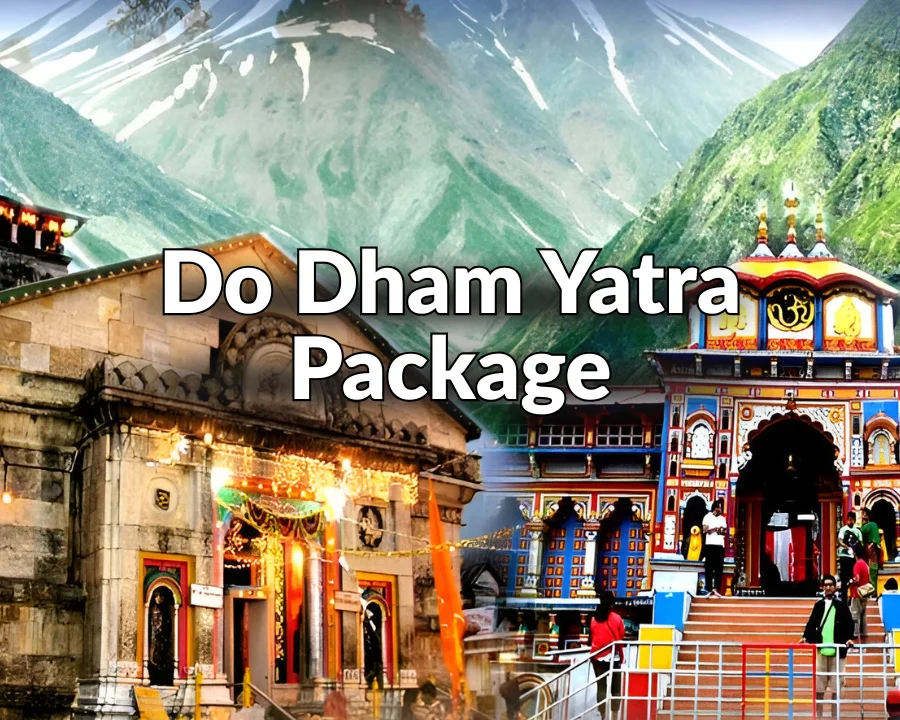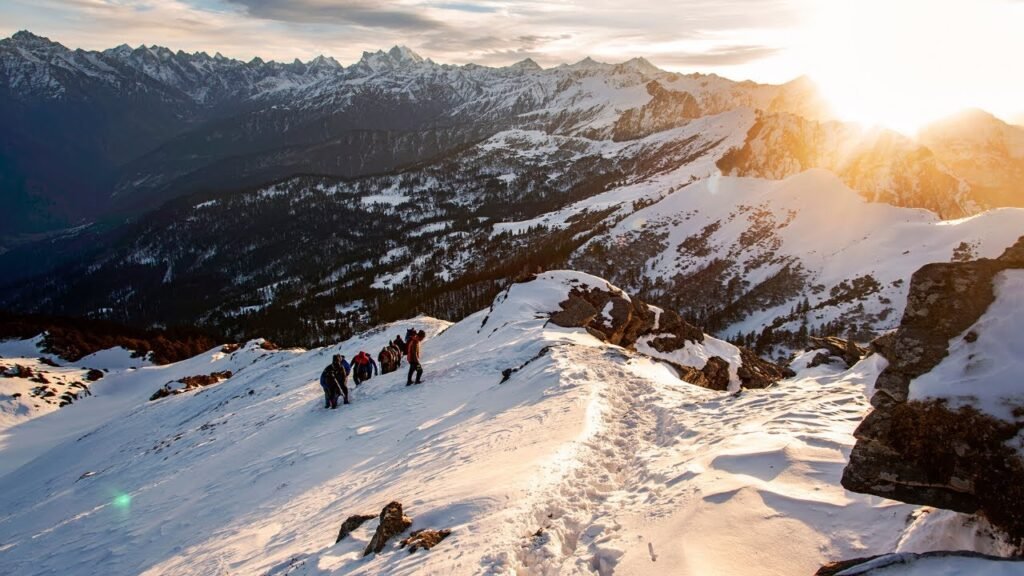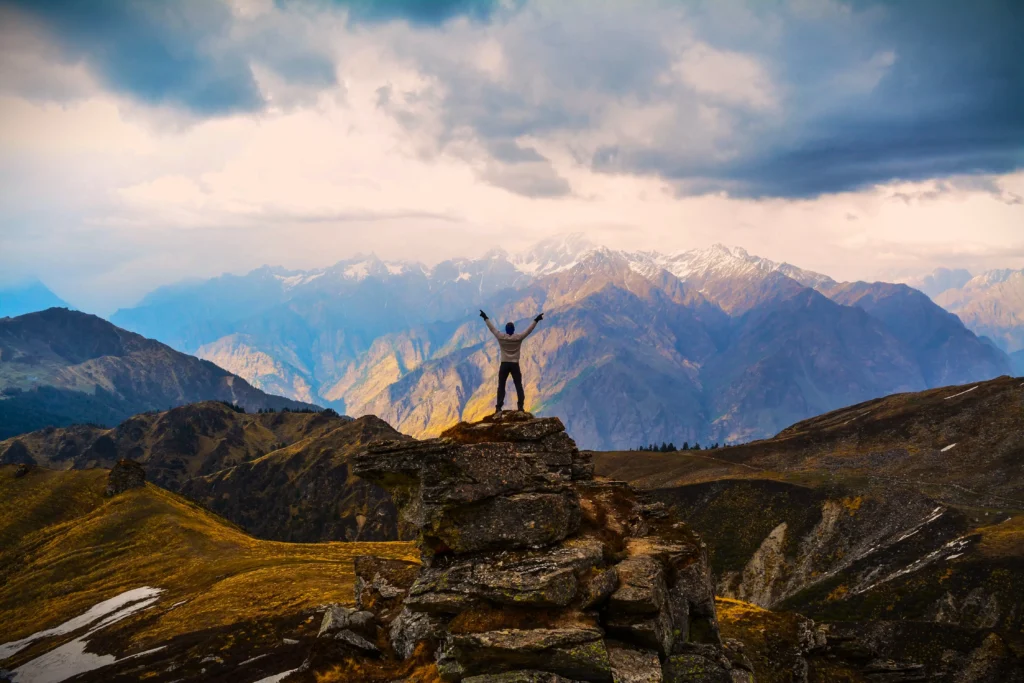
Look, let me tell you straight up: the Pangarchulla Trek is not your typical weekend walk in the hills. If you’ve done a couple of nice, gentle treks—maybe a Brahmatal or a Kedarkantha—and thought, “Yeah, I nailed that, what’s next?”… well, Pangarchulla is exactly what’s next.
It is the trek that separates the tourists from the genuine mountain lovers. It’s a gut-check. It’s a 15,069-foot slap-on-the-back that says, “Welcome to the real game.”
I remember the first time I saw the summit day path, especially in the spring snow. It looked impossible. Steep, endless, and utterly silent, like something out of a documentary about Everest training. But that’s the beauty of it: the challenge is the point. You earn every single, glorious, lung-busting step. And when you finally stand on that summit—the crisp, thin air burning in your lungs—and see the entire Garhwal Himalayas laid out like a personal audience, you realize why people come back to these mountains again and again. It’s a true, honest-to-goodness summit climb experience, a mini-expedition that gives you the rush of amateur mountaineering without needing ropes and oxygen tanks.
This isn’t about ticking a box; it’s about transformation. If you’re looking for the ultimate step up—for an adventure that demands courage, endurance, and a spirit hungry for the extraordinary—stop reading guides written by robots. This is the one.
Chapter 1: The Vibe
Joshimath, the ancient, revered town, one of the four maths established by Adi Shankaracharya, feels like the perfect gateway. It has that heady mix of pilgrimage sincerity and rugged adventurism. You can grab a decent Garhwali meal, stock up on anything you forgot (sunscreen, chocolate, an extra pair of thermal socks—always an extra pair!), and spend the evening watching the last light disappear from the peaks, knowing those giants are waiting for you.
The actual trekking starts a short drive away at Dhak Village.
Why This Peak is Different: Altitude and Intent
Pangarchulla takes you to a formidable altitude of 15,069 feet (4,593 meters). That number should mean something to you. It’s high enough to demand serious respect.
But here is the real differentiator: many Himalayan treks end at a pass (a low point between peaks) or a viewpoint (a nice ridge). Pangarchulla takes you to a distinct, challenging peak. It’s a true summit. The experience involves everything from gentle forest walking to scrambling over rocky moraine, and crucially, tackling that steep, demanding ascent over snow, turning the final hours into something that feels genuinely expeditionary. You don’t just hike here; you climb.
Chapter 2: The Core Highlights That Will Stick With You
The Summit Day: Pain, Stars, and Absolute Glory
Let’s be honest, the entire trek is about the culmination of that final summit day. This is the moment you’ll replay in your head for years.
The alarm usually screams at you sometime between 3:00 and 4:00 AM. It’s pitch black, the temperature is hovering near or below freezing, and your tent feels like the only warm bubble left in the universe. But you have to get up.
The first couple of hours are a grind. You’re bundled up, headlamps cutting narrow cones of light into the darkness, focusing only on the boots of the person in front of you. It’s a steep, often snowy slog. Your mind will try to trick you into turning back. But keep looking up.
The reward for that pre-dawn effort is astronomical, in every sense of the word. You’re navigating under a sky that is absolutely indifferent to humanity—a dense, inky black velvet canvas completely riddled with more stars than you thought existed. I remember seeing the Milky Way so clearly it looked like a spill of cream across the darkness. The silence up there is terrifying and exhilarating all at once.
Then, the sun.
As you near the summit ridge, the eastern horizon starts to glow. That moment when the first sliver of sun explodes over the horizon and hits the giant peaks around you—Nanda Devi, Chaukhamba, Kamet—turning them instantly from massive, cold silhouettes into towering structures of blazing gold. All the fatigue, the cold, the self-doubt—it dissolves into nothing but profound, simple joy.
The Panoramic View: An Amphitheater of Giants
The view from the Pangarchulla summit is non-negotiable proof that you are standing in the presence of greatness. It’s not a sliver of a view; it’s a terrifyingly huge, 360-degree spectacle.
You feel small, irrelevant, and yet completely privileged. Here are the stars of the show that will line up for you:
Nanda Devi: India’s second-highest mountain, revered and majestic, dominating the scene. It has a presence that is almost divine.
Chaukhamba: The four-pillared massif, a huge, colossal block of ice and rock that seems impossible to scale.
My advice:
forget the phone camera for the first five minutes. Just stare. Let the scale of it all hit you. No photo can capture the feeling of the wind on your face and the vast, silent sea of peaks around you.
Snow, Rhododendrons, and the Great Contrast
The magic of Pangarchulla isn’t just the summit; it’s the journey there.
The trek is a lesson in contrast. The initial days are spent in these incredibly lush, damp, fragrant forests—mostly oak, pine, and deodar. If you come in spring (March-April), you will be walking through tunnels lined with vibrant rhododendrons. These aren’t tiny shrubs; they are full trees that burst into every shade of red and pink imaginable. I swear, the color against the occasional patchy snow is so intense it hurts your eyes (in a good way).
Then, as you gain altitude, the trees eventually give way to the bugyals (alpine meadows). In spring, these are often wide, snow-covered valleys that feel like a pristine, untouched arctic landscape. This is where the real snow adventure begins. You’ll be strapping on your microspikes and gaiters, learning to trust the crunch of the snow under your boots. This is the stretch that makes the trek feel like a mini-expedition, a true test of winter trekking skills.
In autumn (September-November), the vibe is entirely different. The snow has mostly retreated, the skies are ridiculously clear (that post-monsoon clarity is the best for photography), and the bugyals turn a stunning golden-brown, looking soft and ready for grazing.

Chapter 3: The Human Element: Culture, Campsites, and Self-Doubt
Living in the Sanctuary: Flora and Fauna
The trail carves through the protected zone of the Nanda Devi Sanctuary. You are a visitor in one of the richest ecosystems in the world.
While you are highly unlikely to see a leopard or a black bear (thank goodness!), the forest is still alive. Keep your eyes peeled for the legendary Himalayan Monal—the jewel-toned state bird of Uttarakhand. It’s an elusive treasure, but catching a glimpse of that electric blue-green plumage is like finding a four-leaf clover. Also look for signs of high-altitude grazers like the Himalayan Tahr or the Bharal (Blue Sheep) on the steeper slopes—they move with an unnerving grace that makes you feel clumsy.
The Heart of Garhwal: Simple Life at the Base
The true warmth of the Pangarchulla experience comes from the people of the Garhwal region. These are tough, honest, incredibly hospitable mountain folk.
Your interaction with them often starts at Dhak and continues with the support team—the guides, the cooks, and the porters. These people are the unsung heroes; they are carrying your tent, making sure you eat, and watching the weather. The simple traditions of these villages—their stone and wood houses, their deep connection to the land, their simple and nourishing food—ground the trek in reality.
Camping: The Best Sleep You’ll Never Get
Camping is not just where you sleep; it’s a central part of the adventure.
Sites like Gulling and Khullara are spectacularly located. Waking up at Khullara, surrounded by snow (if you’re there in spring), the peaks standing sentinel on the horizon, is utterly silent. It’s the kind of silence that actually rings in your ears.
And the night skies?
Forget about it. The Himalayan night sky, far away from any light pollution, is a proper cliché—but only because it’s true. On a clear, moonless night, the Milky Way feels close enough to touch. I spend the first hour after dinner outside, staring up, and I highly recommend you do the same. It’s humbling, a profound reminder of how vast the universe is, and how small your little campsite is beneath it.
Chapter 4: Preparation and The Human Imperative
The Fitness Requirement: No Lies Here
I won’t lie to you: Pangarchulla is rated moderate to difficult for a reason. You cannot simply show up. This is a trek that requires a conversation with your body, not just your ego.
You absolutely need prior high-altitude experience. If your only prior trek was a simple valley walk, Pangarchulla will hurt. You need to know how your body reacts to low oxygen. Something like Kuari Pass or a tough five-day itinerary is a prerequisite.
Your fitness routine should be non-negotiable:
Cardio is King: You need a high level of cardiovascular endurance to manage the thin air. If you can’t run 5 km in under 30 minutes without collapsing, you need to work harder. Lung power is everything up here.
Leg Strength: The steep ascents and descents—especially the final summit push—will demand everything your quads and calves have. Incorporate stair climbing (with weight!) and lunges into your daily routine weeks before you leave.
Endurance Practice: Do those long, 7 to 10 km walks with a backpack weighed down to about 10 kg. Simulating the trekking load is crucial for avoiding muscle fatigue and knee strain on the trail.
The Safety Conversation: AMS is Real
This is not the time to be a hero. High-altitude trekking is inherently risky, and Acute Mountain Sickness (AMS) is your biggest enemy.
Pacing: The itinerary is deliberately structured to walk high, sleep low. Trust the process. Walk slow. Walk ridiculously slow. Your guide is not racing the clock, and neither should you.
Hydrate Relentlessly: You are losing moisture constantly. Drink 4 to 5 liters of water a day. Dehydration masks as altitude sickness, and it exacerbates everything. Avoid alcohol and excessive caffeine before and during the trek.
Communicate:
If you feel dizzy, sick, or have a severe, persistent headache, tell your guide immediately. They are trained to handle this, and their first priority is your descent. Don’t push through it out of pride; your life is worth more than a summit picture.
The Gear That Becomes Your Best Friend
Packing is an art. Everything you carry, you carry uphill.
The Trinity: A great down jacket, robust waterproof outerwear, and fantastic waterproof, high-ankle trekking shoes are your holy trinity of gear. Skimp on these, and you will be miserable.
Summit Gear: For spring, your microspikes (traction on ice) and gaiters (keeping snow out of your boots) are absolutely non-negotiable. Don’t start summit day without them.
The Small Lifesavers: Two pairs of gloves (a thin one for dexterity, a thick waterproof one for the cold), UV-protection sunglasses (snow blindness is real and terrifying), and a high-SPF lip balm and sunscreen. The sun at this altitude is brutally intense.

Chapter 5: The Enduring Why
Why Pangarchulla? The Ultimate Transition
In a sea of beautiful treks, why should you choose this one?
Because Pangarchulla offers the most honest experience of what it means to push your limits in the high mountains. It’s the perfect transition. You are graduating from the “trekker” to the “aspirational mountaineer.” It tests your patience on the long forest trails, your grit on the cold summit morning, and your physical endurance on the steep snow slopes.
You are in the heart of the Nanda Devi complex, looking at the crown jewels of the Garhwal.
This is a trek for the soul that needs a challenge, for the body that needs a workout, and for the mind that needs a humbling perspective check. It is intense, it is demanding, and it is absolutely, profoundly, worth every single second of the pain.
The Pangarchulla summit is waiting. Are you ready to earn it?
If you loved reading about this, you might also like Kuari Pass Trek. Contact us, if you want to join us in our trekking journey.




